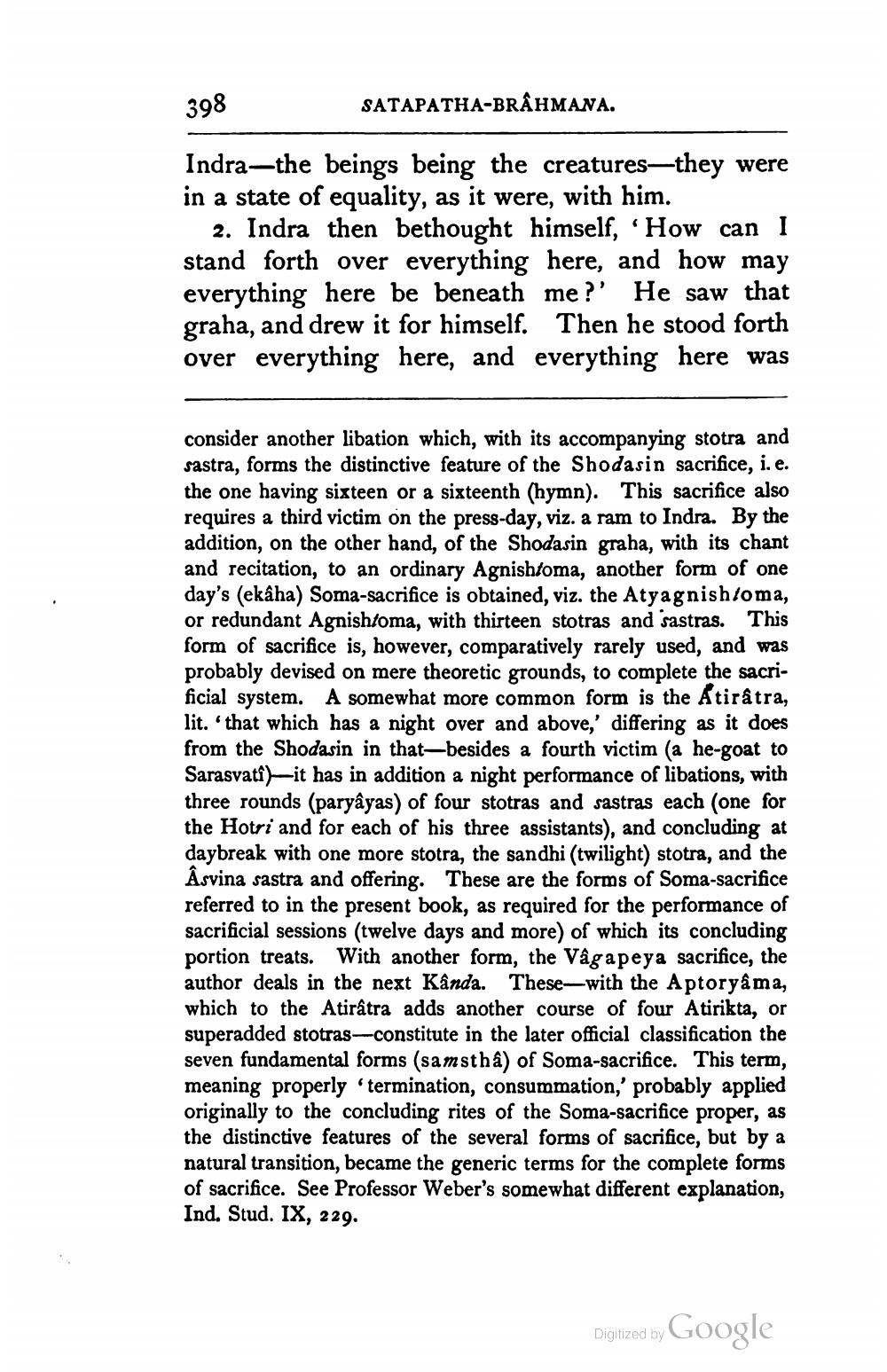________________
398
SATAPATHA-BRAHMANA.
Indra—the beings being the creatures—they were in a state of equality, as it were, with him.
2. Indra then bethought himself, “How can I stand forth over everything here, and how may everything here be beneath me?' He saw that graha, and drew it for himself. Then he stood forth over everything here, and everything here was
consider another libation which, with its accompanying stotra and sastra, forms the distinctive feature of the Shodasin sacrifice, i.e. the one having sixteen or a sixteenth (hymn). This sacrifice also requires a third victim on the press-day, viz. a ram to Indra. By the addition, on the other hand, of the Shodasin graha, with its chant and recitation, to an ordinary Agnishtoma, another form of one day's (ekâha) Soma-sacrifice is obtained, viz. the Atyagnishloma, or redundant Agnishtoma, with thirteen stotras and sastras. This form of sacrifice is, however, comparatively rarely used, and was probably devised on mere theoretic grounds, to complete the sacrificial system. A somewhat more common form is the Atirâtra, lit. 'that which has a night over and above,' differing as it does from the Shodasin in that-besides a fourth victim (a he-goat to Sarasvati) it has in addition a night performance of libations, with three rounds (paryâyas) of four stotras and sastras each (one for the Hotri and for each of his three assistants), and concluding at daybreak with one more stotra, the sandhi (twilight) stotra, and the Åsvina sastra and offering. These are the forms of Soma-sacrifice referred to in the present book, as required for the performance of sacrificial sessions (twelve days and more) of which its concluding portion treats. With another form, the Vâgapeya sacrifice, the author deals in the next Kanda. These—with the Aptoryama, which to the Atirâtra adds another course of four Atirikta, or superadded stotras-constitute in the later official classification the seven fundamental forms (samstha) of Soma-sacrifice. This term, meaning properly 'termination, consummation,' probably applied originally to the concluding rites of the Soma-sacrifice proper, as the distinctive features of the several forms of sacrifice, but by a natural transition, became the generic terms for the complete forms of sacrifice. See Professor Weber's somewhat different explanation, Ind. Stud. IX, 229.
Digitized by Google




